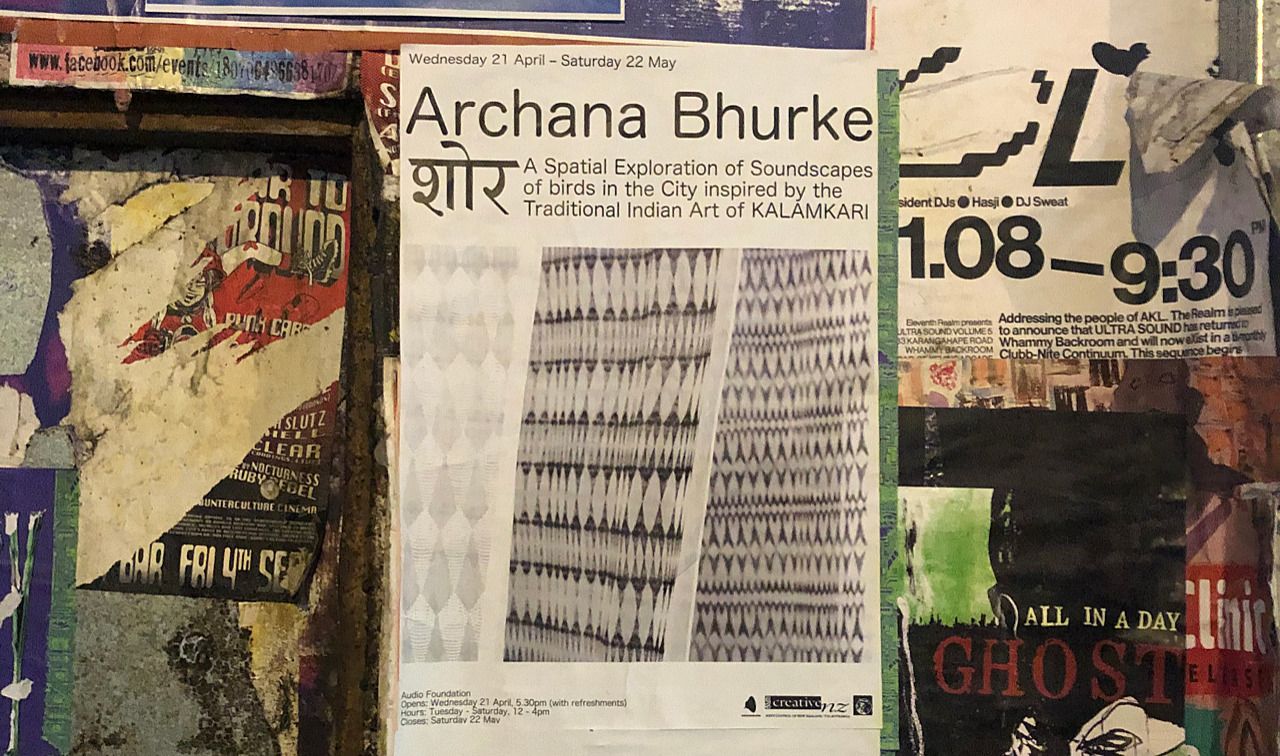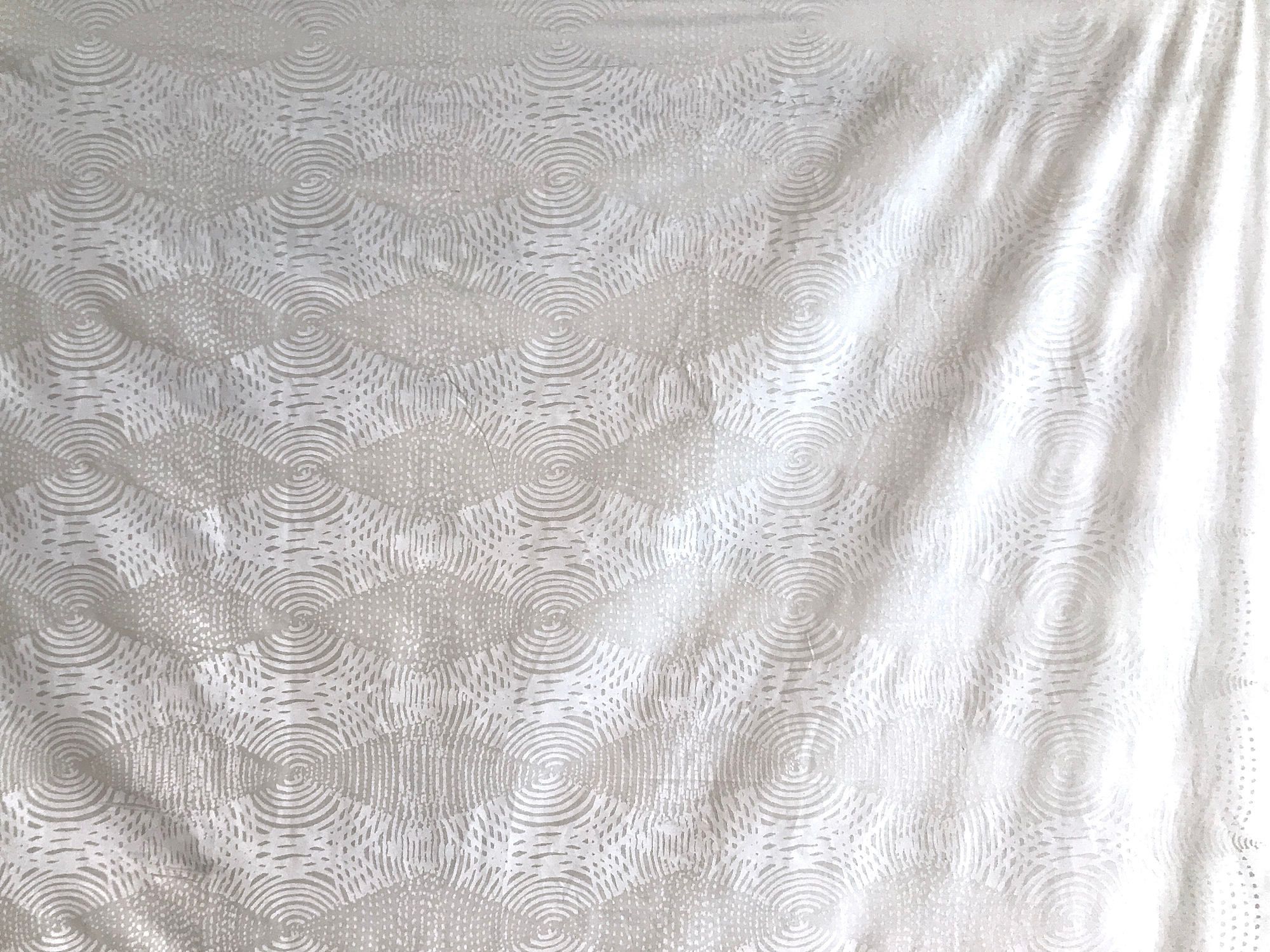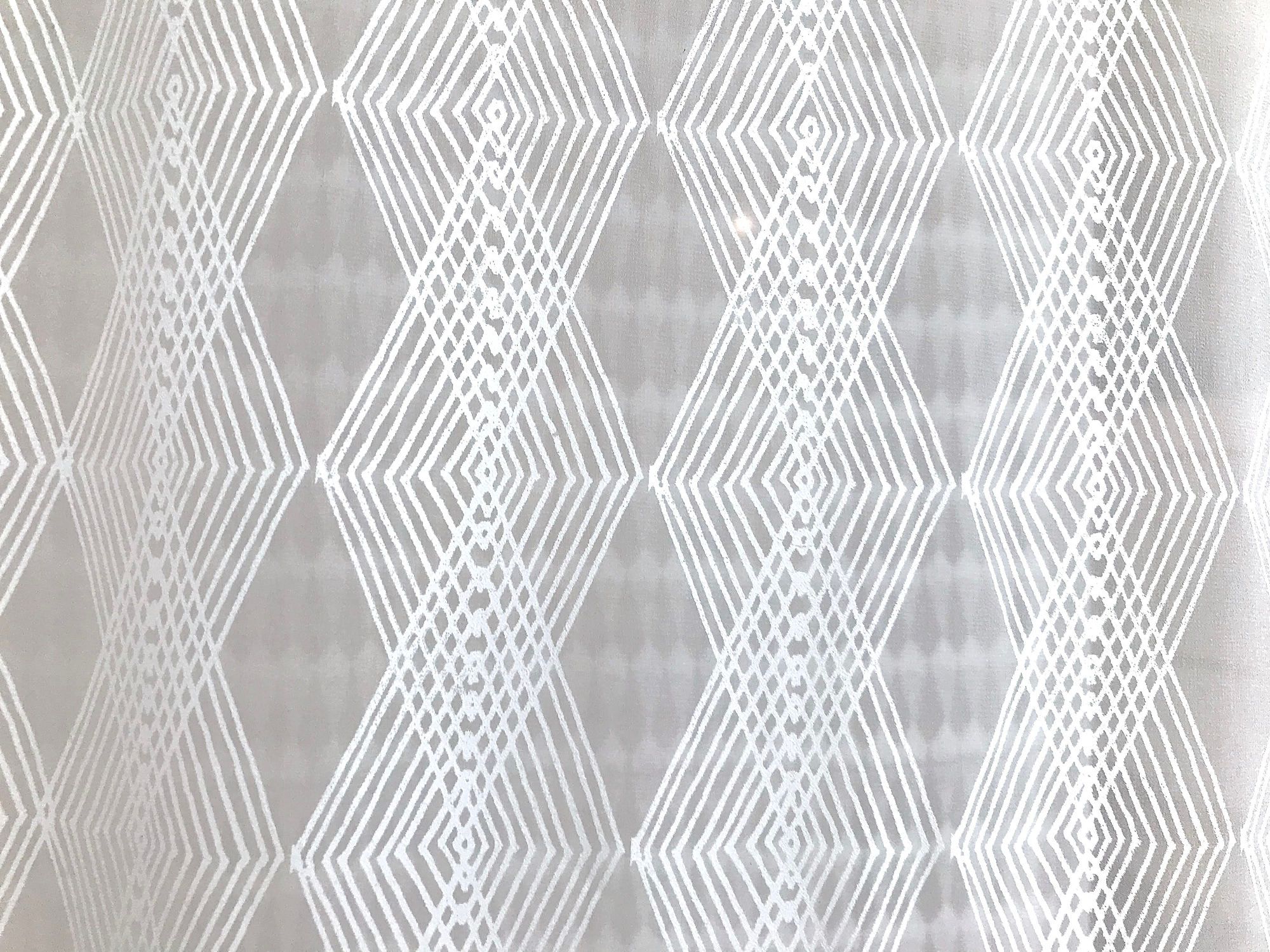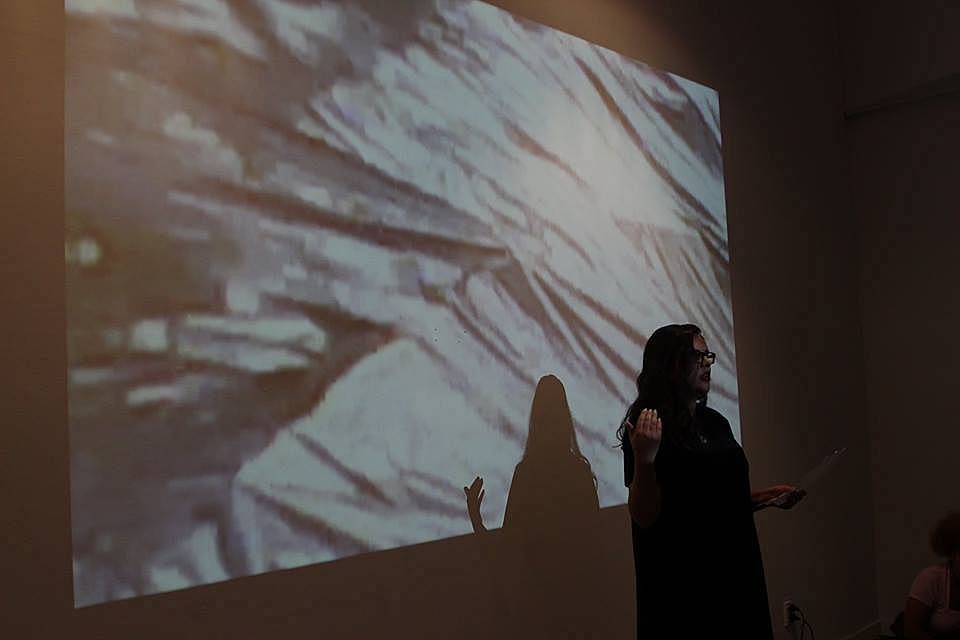Audible in the Quietude
The storied and pulsing visual language that is शोर by Archana Burke enfolds Divyaa Kumar.
When we encounter art, the way we, as visitors in a space, or viewers of a film, or listeners of a sound, are encouraged to interact with art, is with slowness in mind. We’re encouraged to let slowness colour our movements, colour our experiences. Advocated are attempts to focus and let the artwork speak to us, let the work occupy our field of vision, the subject of our attention. Interpreting what we see and hear is the far more complex endeavor, putting a language to an event we may not fully comprehend.
Archana Bhurke’s exhibition शोर , in the light-flooded basement of Audio Foundation, advocates for us to consider such slowness and attention to space, how we occupy space and what occupies it with us. Burke's installation takes up the entire area, consisting of a series of screen-printed cotton lengths suspended from metal rods jutting out from a sunny wall, small handkerchief sized rectangles, and framed selections of fabric, all mosaiced along the walls. You get the sense of being embraced or enfolded into something, like a child lost in bedsheet folds, hung up to dry, or a hall of mirrors. You think of echos, the patterns and motifs reverberating around you softly and quietly, like pouring out thick honey.
The exhibition takes its name from the Hindi word for ‘noise’ - शोर (pronounced shor). We could use many words to describe the sonic occurrences we encounter daily; discord, clamour, a din, racket. And yet, the term ‘noise’ itself is neutral; it fluctuates along the axis depending on where we hear it, how we interpret it, how familiar or unfamiliar it is. It also changes from when we recognise it, turning from a ‘noise’ into a ‘sound’, which demarcates importance or merit. Highlighted here is the value of listening, of turning noise into sound, patterns in space, to establish a sense of emplacement and validity.
A captivating collection of sonic events, transcribed into a meditative, pulsing visual language
Archana Burke, 2021
The works themselves are a captivating collection of sonic events, transcribed into a meditative, pulsing visual language that shimmers on the surfaces of these delicate sheets of fabric. Bhurke explains that these sounds, the whistle of Tūī and Myna birds, are pulled from her walks around the city, the birdsong providing the casually perfect vehicle to guide us through her interpretations of space, place and time.
With their compact brown bodies and yellow beaks, the Myna bird is a species introduced to Aotearoa but native to South Asia, particularly India, Bangladesh and Pakistan. The Tūī, is of course, a native bird, and so the combined birdsong of these two unfold into a clean metaphor for migration and place, one’s sense of it, and how we fill it up and hold it.
The foundations of these works are built upon what Bhurke calls her ‘walking methodologies’ - systems of ‘walking’ in and around the city, and applied as a method to find these sounds. She walks in and around the city and discovers both unfamiliar and familiar sounds, Tūī and Myna, new and un-new. From these findings, she develops what she refers to as ‘sonic cartography’ - a map of sounds to help interpret the topography of a new space. Maps not only provide us with an understanding of space; they provide us with directions, structure and scaffolding for our concepts of space and where we are within it.
Taking these instructions from the aural map she has created, Bhurke then transforms them into a visual language, couched in her interpretations of these sounds, and presented through her connections to the Indian heritage art of Kalamkari; intricate hand or block-printed textiles. An artform with a deep history in the Isfahan, Iran and in Andhra Pradesh, India, kalamkari was traditionally a form of record keeping - putting pattern and imagery to the stories told by travelling musicians and artists, chronicling local mythologies and histories.
More recently, Kalamkari has enjoyed a transformation from traditional to digital techniques, financed by an ever-growing international demand, as the techniques are introduced more widely across India and Iran. Here, Bhurke acknowledges where the visual language starts, where it is moving to, and how we can use this as a vehicle to enrich our understanding of stories of belonging and becoming.
In building this space amongst the fabrics, Bhurke unfolds her own stories of belonging
Archana Burke, 2021
The motifs are stark. Deep and dark greys screen-printed onto the surfaces of the fabric, which itself is a soft muted white. The light in the space refracts off the suspended work, bouncing around and making the patterning crisper. Through the use of digital manipulation and screen printing, we see the patterns reimagined in an infinite kaleidoscope. Some of the motifs are no larger than an inch, others the width of a hand. Some bear a resemblance to fingerprints, with their swirling circular shapes and fine lines, where others look like the tracks a bird might make in soft dirt, little tripod shapes hidden amongst the rhythmic stripes.
Through the simple action of transcribing her experiences with these birdsongs into this visual language, Bhurke champions the importance of letting everyone find their space, discover and occupy it, and then let their stories unfold. How we view space and share it amongst ourselves is under interrogation here, what experiences we might let slip through the cracks in the haste of our daily lives. In building this space amongst the fabrics, Bhurke unfolds her own stories of belonging, and where she sits amongst the noise.
And there are more stories to come. One particular work catches my eye - a small swatch pinned to the wall, its pattern riding the edge of being both circular and geomatic, a squashed hexagon fractured into six wedges, each mirroring each other, but with layers of intensity. There is the hush of anticipation within this motif as we wait with bated breath for another measure of sound to be added to this evolving, spirling pattern. A metaphor, perhaps, or a silent signal, saying that there is much more, audible in the quietude, to come.
Audio Foundation
21 April - 22nd May
--
Works purchasable - contact the artist via IG @archanabhurke



